Description
16x20 GRID Canvas 3/4" Deep #GRD-1620
Buy a 4-pack and save cost and shipping!

Grid™ Canvas is a unique product that has a grid actually printed on the canvas itself. The grids are 1"x1" with additional 1/4" lighter weight lines, very similar to graph paper. The 100% cotton canvas is 3/4" deep canvas and is stretched using our MasterWrap™ back-stapled method with tailored corners. Our proprietary stretching products uses pneumatically controlled machines that yield drum-tight tension.
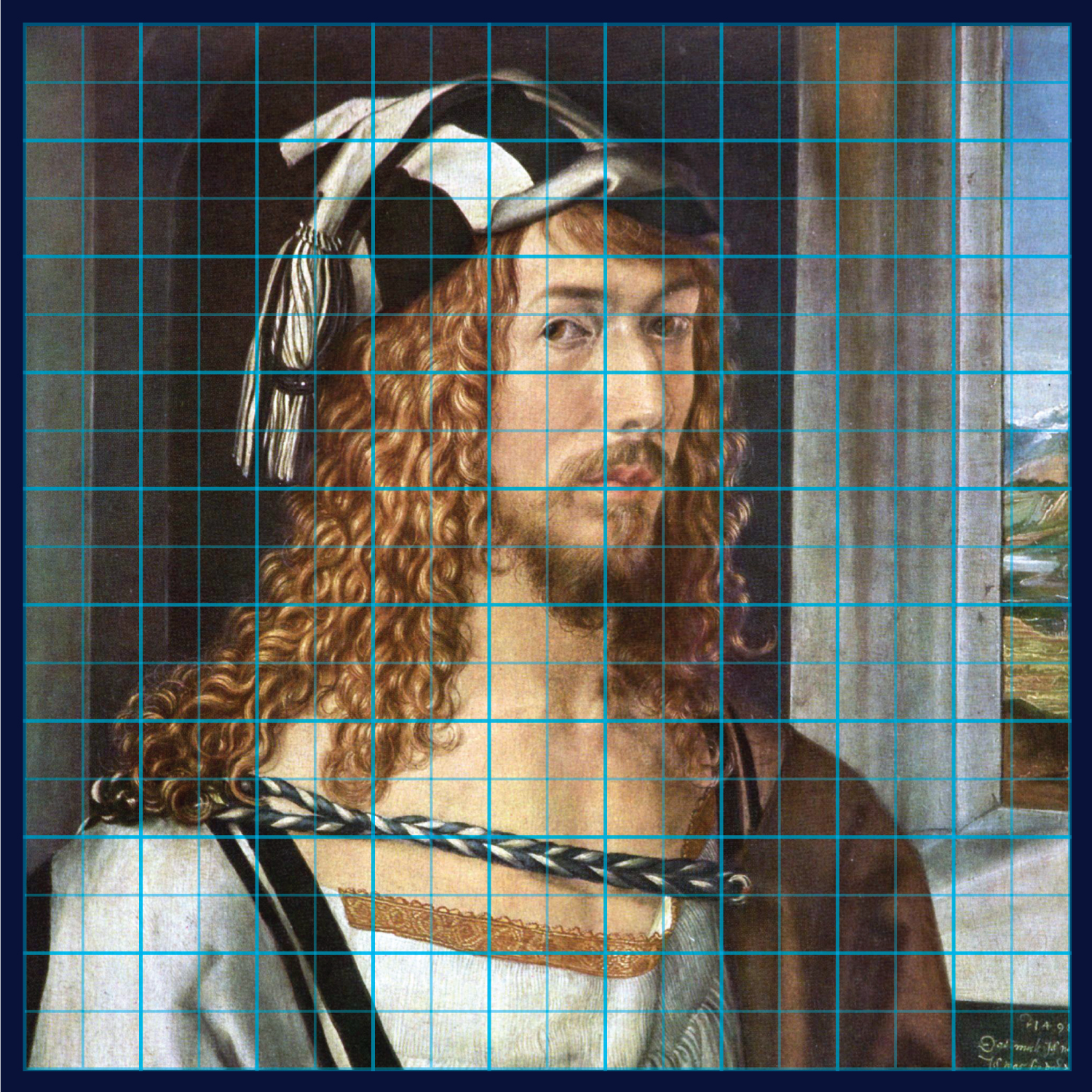
Transpose a Photo, Image, Tracing, or an actual scene onto Canvas
As demonstrated by this 1498 self portrait of Albrecht Dürer, himself, the grid process is a proven method for creating realistic art from a photograph, or from an actual scene through a "gridded" glass. Grid™ makes it easier to achieve actual life-like proportions that make your portraits captivating. Still-life perspectives come alive on canvas. Artists of all levels can achieve artistic accuracy and excellence using this method.
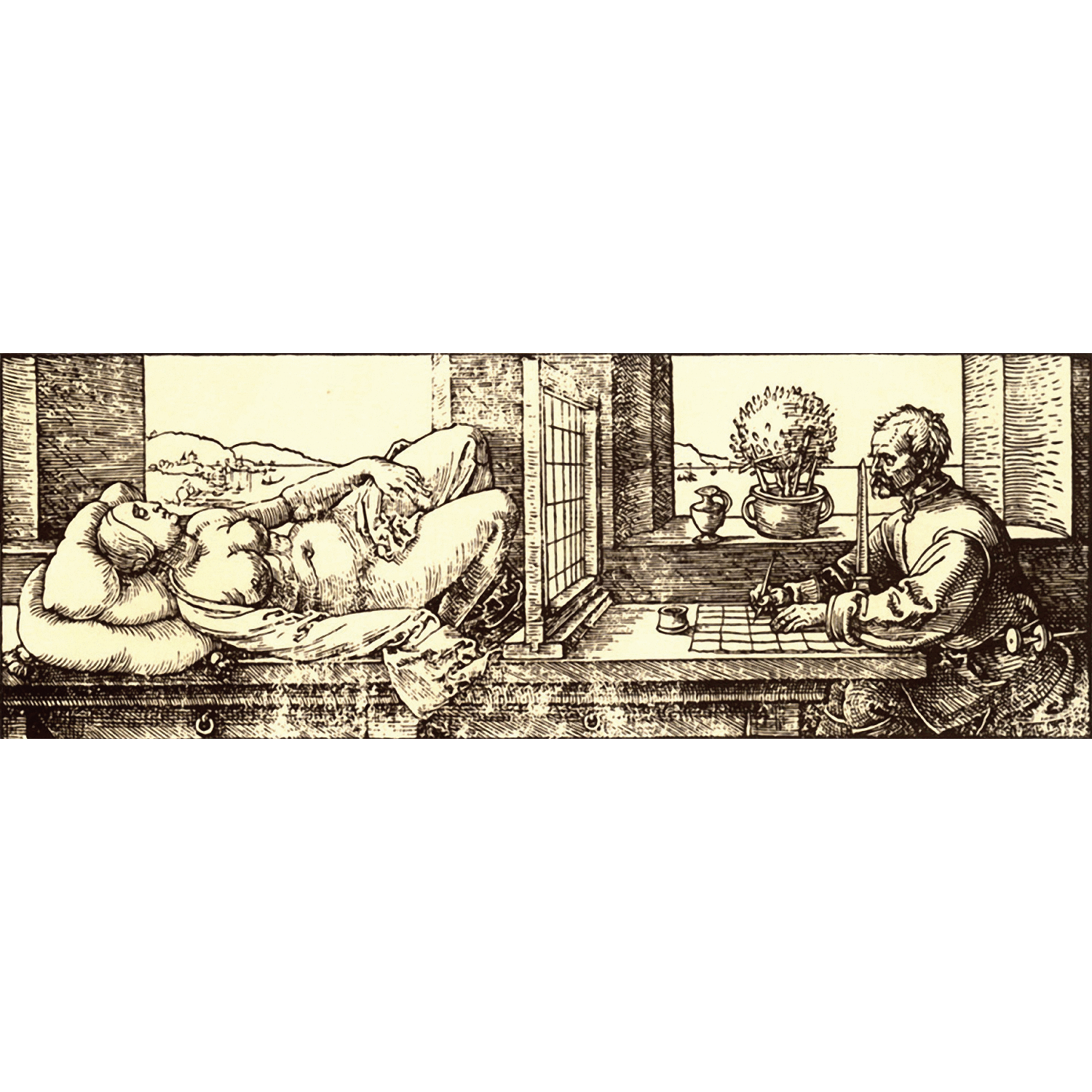
Transpose a Scene Directly onto Canvas
This famous 1506 drawing by German artist, Albrecht Dürer, demonstrates the grid transfer process. The drawing is called the "Draughtsman's Net," because he used a glass encased in a wooden frame and black threads to create his grid pattern on the glass. The artist looks through the glass and outlines the subject and that can be transferred to the gridded canvas.
The graphic shows Dürer's entire drawing and zooms-in on the left and right sides to provide a better glimpse of how the grid process. It is a very efficient method for drawing and tracing your main lines with a high degree of accuracy and takes away most of the guesswork when generating your proportions.
You can look-up on-line more about this process and find more drawings, as Dürer himself wrote a book called, "Treatise of Measurement" after having traveled to Italy and becoming totally immersed in Italian Renaissance art theory.

Transpose a Scene Indirectly onto Canvas
Using the gridded glass described above, trace-out your scene on the other side of the same gridded glass, and then use that as your "tracing" to transpose onto the canvas. The grid on the glass corresponds to the grid printed on the canvas.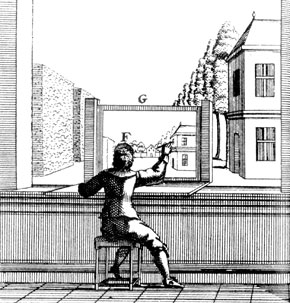
Enlarge or Reduce your Painted Image
To enlarge your image, draw smaller than a 1" x 1" grid pattern directly onto your image, glass, or plastic sheet. Then correspond the grid on the image with the heavy bordered 1" x 1" squares on the canvas.
To reduce the size of your image, draw a grid larger than 1" x 1" squares on the glass. This works even if you are transposing your image directly or indirectly, as discussed above.
You can literally trace-out exactly what you see on the "gridded" glass. That grid will correspond to the grid on the canvas and you can thereby transpose a scene with unbelievable proportional accuracy.
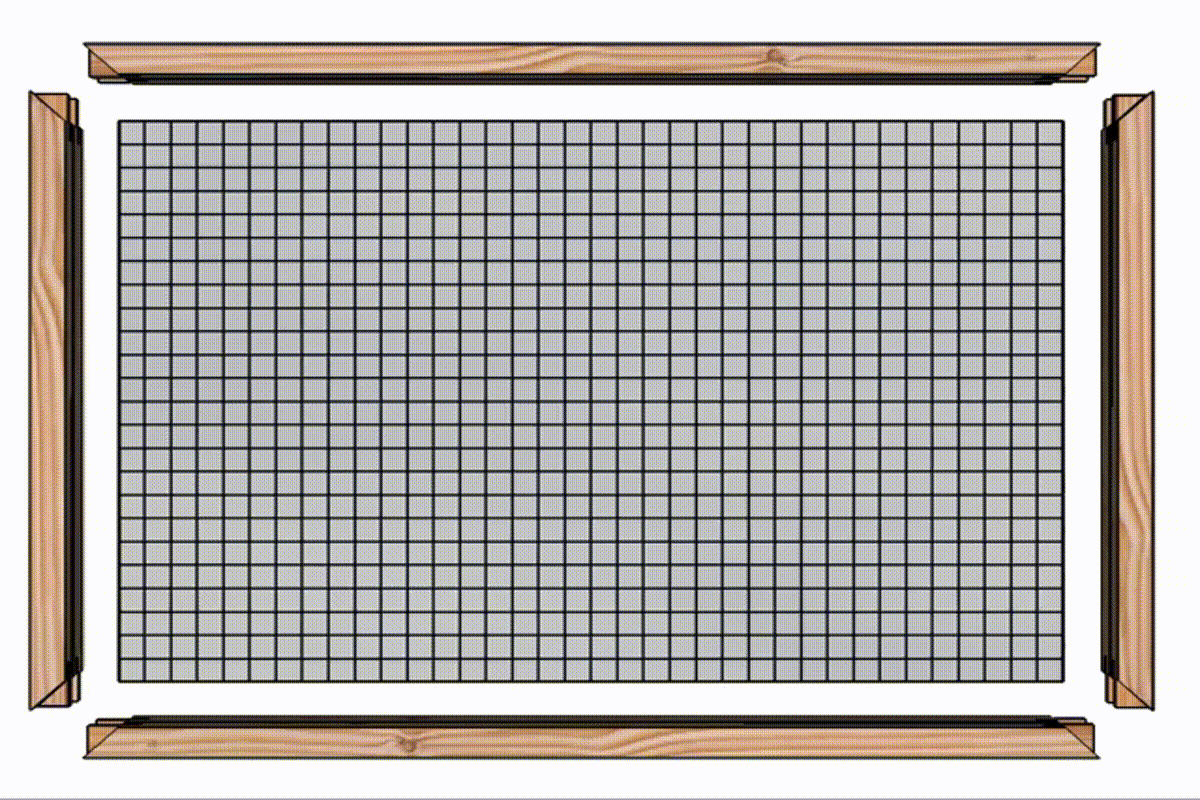
Build Your Own Draughtman's Net
You could easily construct your own Draughtman's Net, as depicted above, any size you want. Simply buy a piece of glass from your local hardware store, which is quite economical. We make K2™ Stretcher Bars, which are ideal for this task because they have an 1/4" interior groove that will contain the glass, and they are 2.5" deep, so the device will stand on it's edge.
For example, if you buy a glass that is say 24x36 in size, then you could buy two 26 Inch and two 38 Inch K2™ Stretcher Bars that would make a 26x38 frame. Because the frame has an interior groove, the glass will be completely contained by the Stretcher Frame, and you would have effectively constructed a similar device as Albrecht Dürer. And with a dry or wet erase marker you can draw a grid pattern on the glass. You can use your Draughtman's Net as the view-finder, described above, to trace your subject on the glass, and then transfer that image to your corresponding a Grid™ canvas.
True 5:4 Photography Proportion - 16x20 Size
The 16x20 size is generally considered the most popular size in art. It doesn't take a lot of wall space, but it provides enough space on the canvas to create detail and made a statement without being too overpowering.
The 5:4 aspect ratio is common to both art and portrait photography, as it creates a visually pleasing format for the human figure and face. The balanced compositional format can help to create a sense of symmetry and harmony in your artwork. The 5:4 ratio has a familiar "feel", as it was commonly used in early computer monitors. Additionally, you might consider trying some relatively unknown sizes in this same proportion that we call Lost Sizes As an artist, you get the best of both worlds, because you still get to use the same aesthetically appealing 5:4 format and use rare or novel sizes that help make your art stand-out.
Here are a couple of other sizes in the exact same 5:4 proportion:
Explore Related Products to this 16x20 Size:
- Other Styles: Classic Cotton™ • Vincent Pro™
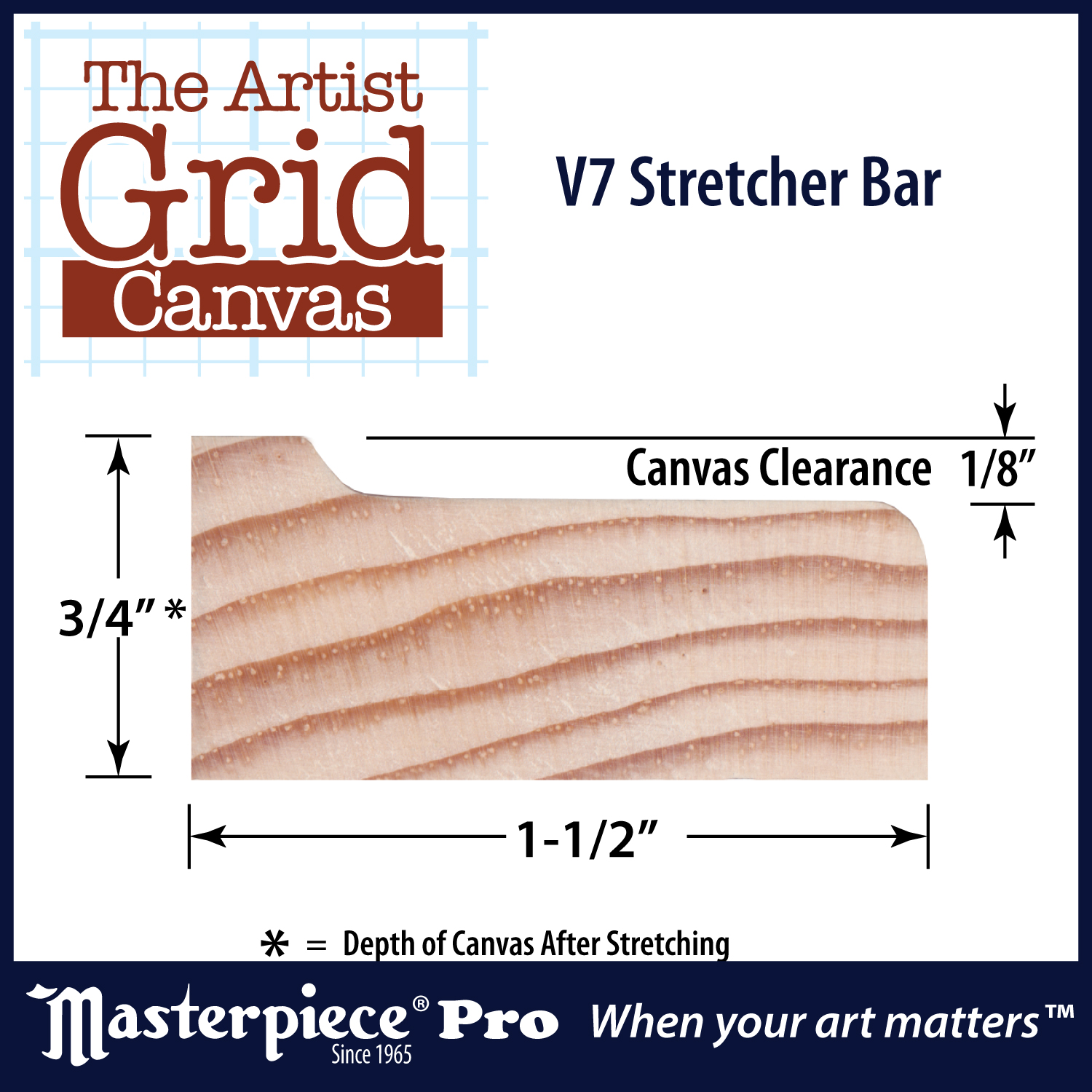
Masterpiece Grid™ 3/4" Deep Bar • 1/8" Canvas Clearance
Canvas Clearance is the space between the Bar and the canvas. Generally speaking, more clearance reduces the risk of the canvas touching the wood and creating unsightly lines during painting. Our design provides maximum possible 1/8" clearance for a 3/4"deep profile Stretcher Bar so as not to impact your painting, but still leaving enough wood to the maximize strength of the frame.
- Stretcher Bar Profile produces a 3/4" deep stretched canvas
- 1-1/2" wide Stretcher Bar
- Solid Ponderosa Pine or Fir from the Pacific Northwest
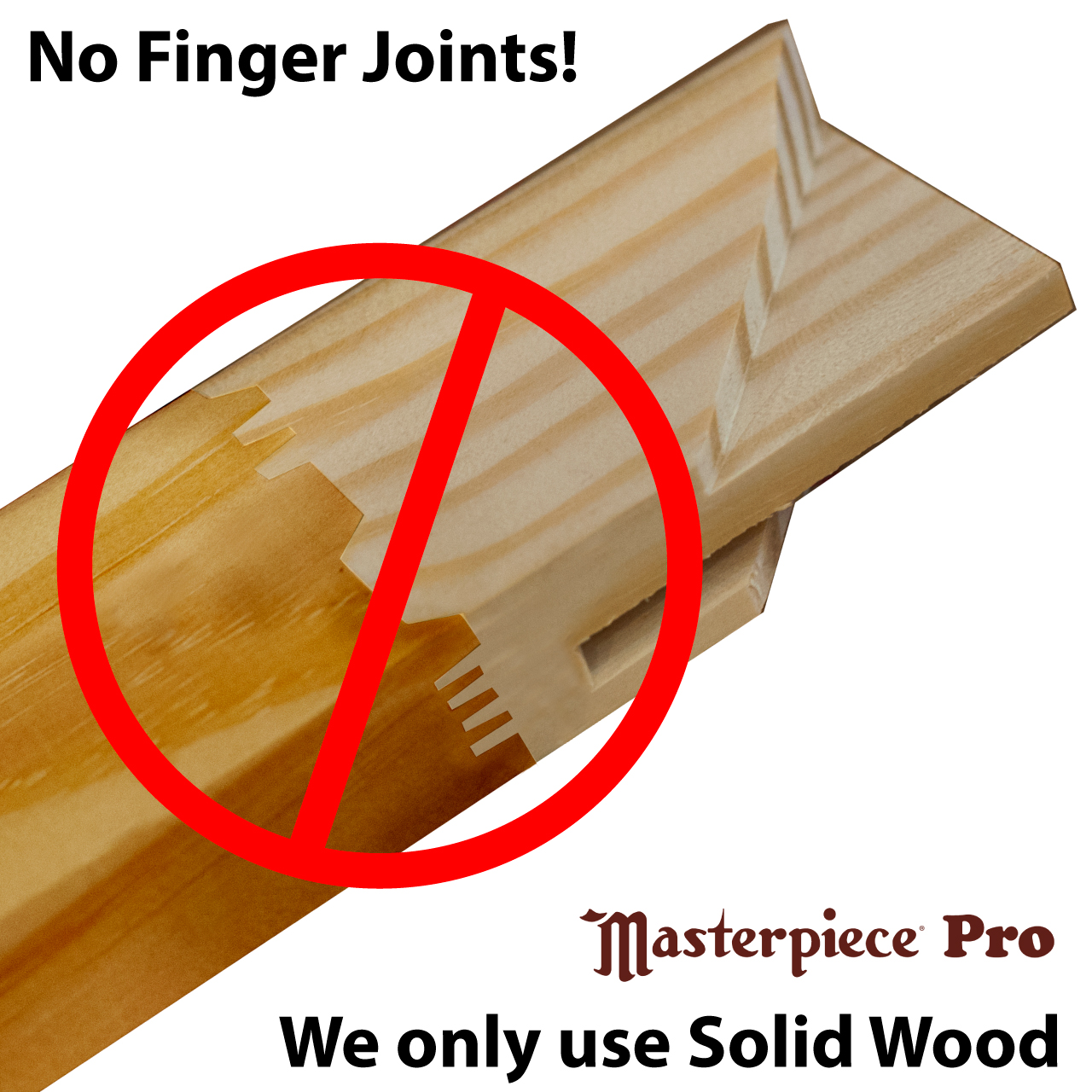
Finger Jointed Wood is not meant for Stretcher Bars
Solid wood makes the most dependable Stretcher Bar, because one homogeneous wood member is going to behave similarly across the entire length of the Bar. Whereas, with finger-jointed wood is made-up of multiple pieces of wood, sometimes on the actual joint itself, presenting multiple points of failure which no one can control.
We only use Solid Wood to build our Stretcher Bars because a solid piece of wood will last indefinitely. When we speak of archival value, it's not just the paint you use and the quality of your canvas and ground, even the wood choices manufacturers add or reduce value to your final painting. The fact is, you don't want problems, and finger joints only increase that risk of the wood falling apart in the future.
The glue used to bind finger joints is a water based adhesive and when that wood is exposed to high humidity environments, particularly with exterior walls, the glue joints can give-up. As a manufacturer, Masterpiece® does its part to conserve as much wood as possible, and still provide a quality product that will out-perform any other in the marketplace.
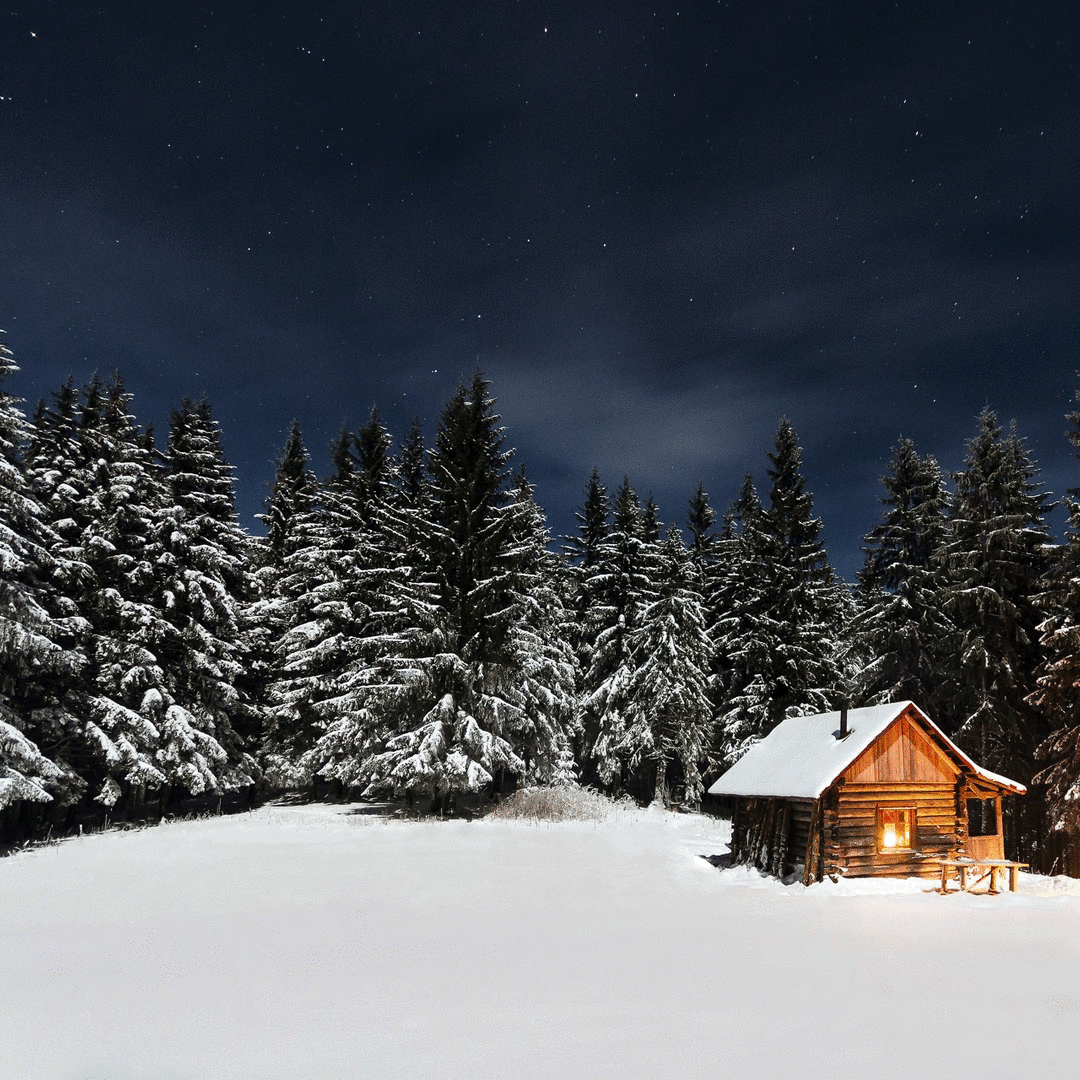
Sustainable Forests - A Precious Natural Resource
The air that we breathe depends upon our healthy forests the world over. For this reason, we only use lumber from the sustainable forests of the Pacific Northwest, so we can guarantee that our nation's precious natural timber resources are available for future generations.
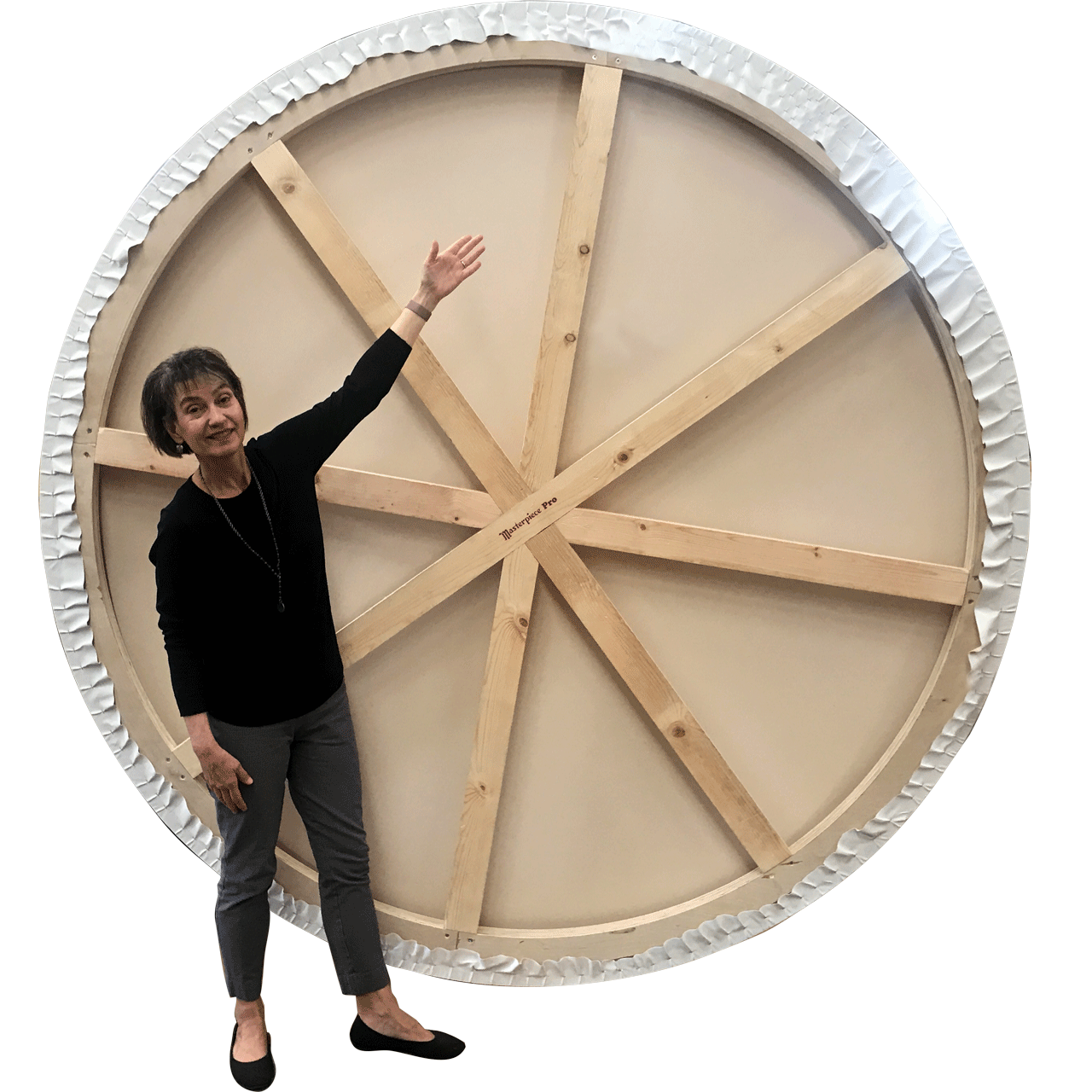
America's Custom Shop!
We offer two Masterpiece Classic depths (3/4" & 1-3/8"), as well as three canvas surfaces to choose from. There are dozens of standard sizes available for these products. If you don't find the size you want, our Masterpiece Vincent™ Pro canvases have 200+ sizes to choose from in over a dozen surfaces. And if you can't find what you want, just ask your local retailer or contact us, and we will help you with your next composition.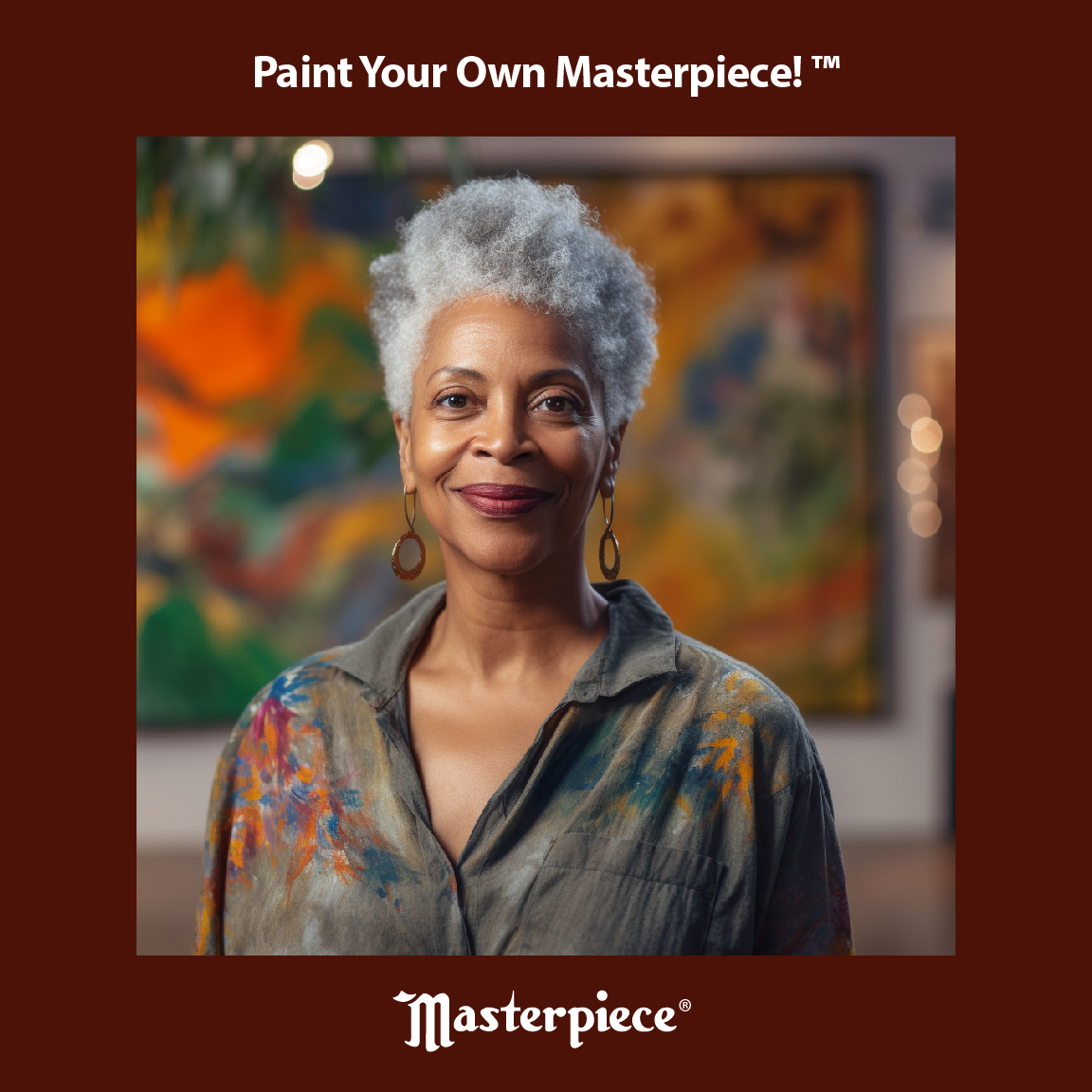
The canvas you choose is the foundation for your painting, but also serves as symbol of the quality that you as an artist stand for, and reflect on your own brand. Masterpiece® serves as your silent partner to create your next masterpiece. You "wow" them from the front, while we "wow" them from behind.
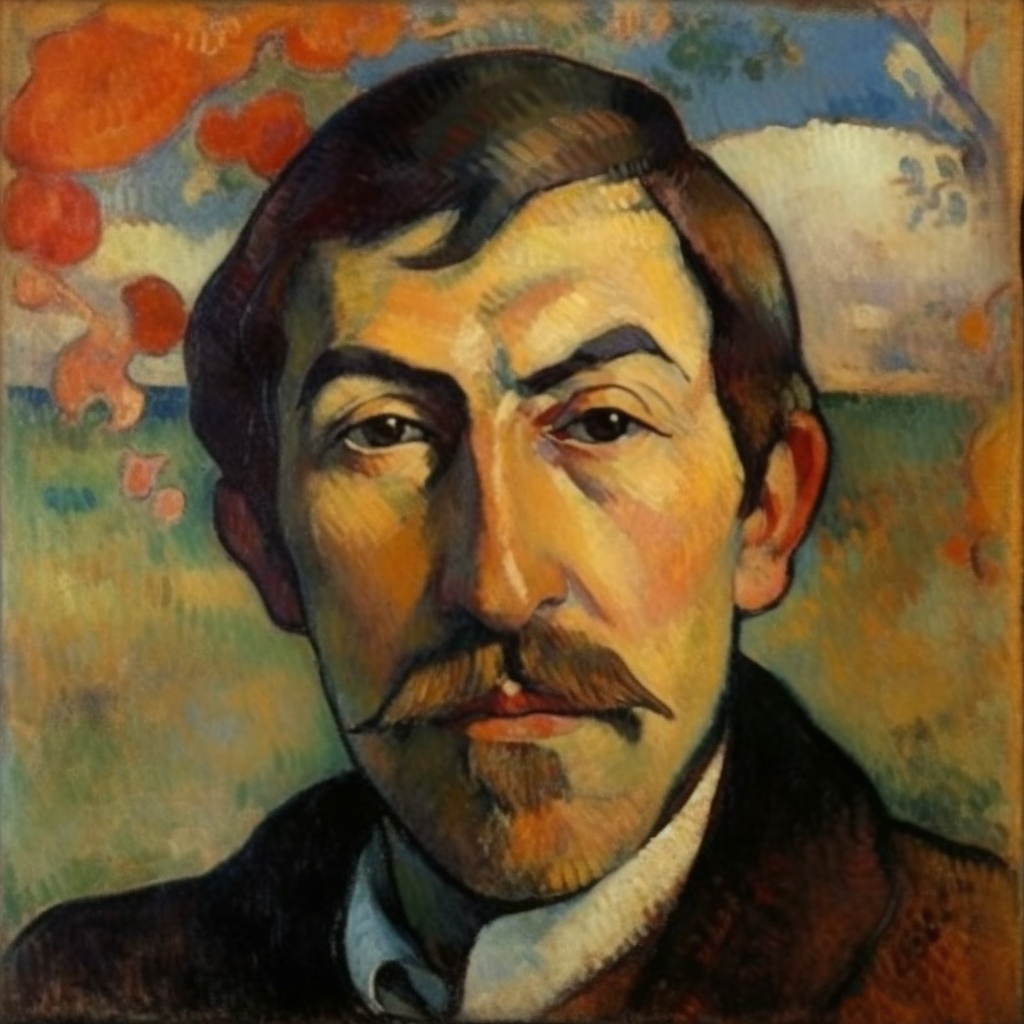
Stay firmly in your own path and dare. Be wild two hours a day.
♦ Paul Gauguin
A figure who dared to break from the norms of his time, Paul Gauguin embraced a life far removed from conventional European society. He ventured to the exotic landscapes of Tahiti, seeking not only artistic inspiration but also an escape from the stifling atmosphere of 19th-century Paris. Gauguin's bold choice to relocate to such a distant land defined his later works, imbuing them with a vibrancy and exoticism previously unseen in Western art. He believed in the authenticity of raw emotions and advocated for uninhibited expression.
His advice to be wild two hours a day resonates with our inherent need, as artists, to break free from conventions, if only temporarily. It's a call for us to embrace spontaneity, to let go of reservations and immerse ourselves in the creative process without bounds. In doing so, we not only explore uncharted territories in our art but also in our own spirits. Gauguin's life and the essence of his works serve as a testament to the boundless possibilities that arise when we dare to step off the beaten path and let our creativity run wild.
Creativity, the silent force beckoning you, finds its voice here. Harmonize your artistic process with these indelible words and meaning by Paul Gauguin, and with our unique portrayal of a self portrait to inspire an enhanced melody in your art. Go make your music on canvas!
Additional Details
- SKU:
- GRD-1620
- Canvas and Depth:
- 0.75 in. Grid Canvas
- Width:
- 16 Inch
- Length:
- 20 Inch
- Aspect Ratio:
- 5:4 Photography








